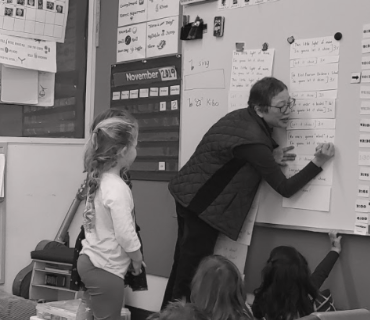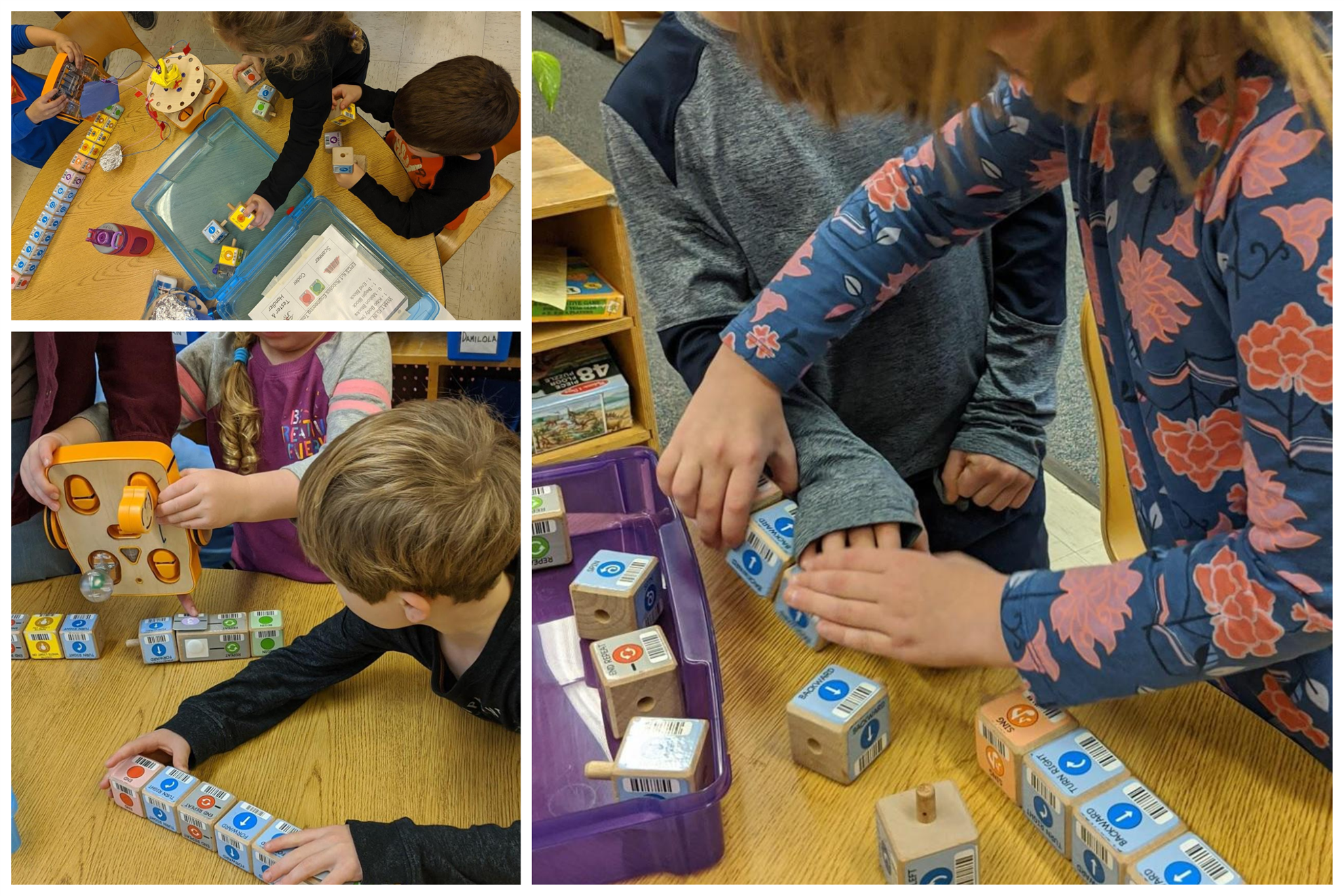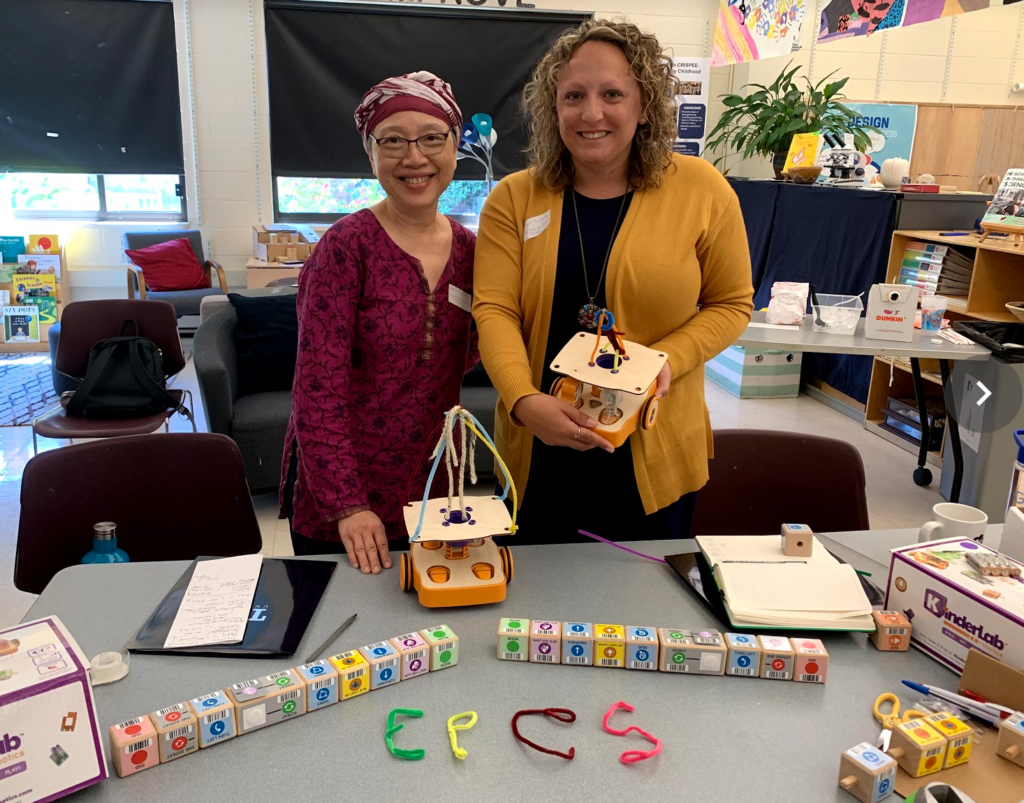
Introducing robotics in early childhood can make technology and engineering education more engaging and hands-on. But can a robotics curriculum that’s designed to be developmentally appropriate for young children also help them become better citizens and human beings?
Full Story
Introducing robotics in early childhood can make technology and engineering education more engaging and hands-on. But can a robotics curriculum that’s designed to be developmentally appropriate for young children also help them become better citizens and human beings?
This past year, eight faith-based and secular kindergarten schools in Boston, United States, and Buenos Aires, Argentina participated in a research project directed by Prof. Marina Bers, from Tufts University, that sought to answer that question through the implementation of a coding curriculum using the block-based KIBO robot. In this project, funded by the Templeton World Charity Foundation Inc., there was participation from a collaborative team of researchers and educators in both countries. In this article, we (Angie Kalthoff, Early Childhood Technology (ECT) Program Manager, and Lynne May Lim, EPCS Education and Research Project Specialist) share the experience of students and teachers at Eliot-Pearson Children’s School (EPCS), a secular school in Boston, as they learned to code and offer our observations of how students exhibited the virtues of creativity, curiosity, and generosity through the coding curriculum using KIBO.
 To kick off the project, educators from the Boston area attended an in-person professional development training at the Eliot-Pearson Dept of Child Study and Human Development, at Tufts University. Everyone attending the training came with a different experience level of KIBO. We discussed how robotics education could foster the virtues of creativity, curiosity, and generosity and how these virtues are manifested in early childhood classrooms. We engaged in hands-on exploration of the KIBO robot and its programming language to gain an understanding of its functions and capabilities.
To kick off the project, educators from the Boston area attended an in-person professional development training at the Eliot-Pearson Dept of Child Study and Human Development, at Tufts University. Everyone attending the training came with a different experience level of KIBO. We discussed how robotics education could foster the virtues of creativity, curiosity, and generosity and how these virtues are manifested in early childhood classrooms. We engaged in hands-on exploration of the KIBO robot and its programming language to gain an understanding of its functions and capabilities.Each school worked in groups to create a story using KIBO that would highlight the values of their school. For our project, we highlighted one of Eliot-Pearson Children’s School core value that encourages children to show respect and kindness towards others and themselves. We imagined our KIBO robots as children and decorated them to look like one. We programmed the robots to tell the story of two children meeting each other and deciding to play together by programming them to move towards each other and do a happy dance.
Implementing The Coding Curriculum Using KIBO
By design, the coding curriculum developed by the DevTech Research Group integrates the Positive Technological Development framework formulated by Prof. Marina Umaschi Bers and inherently encourages the development of character virtues. The coding curriculum prompts children to communicate their thinking with others and openly listen to the ideas people offer. It also promotes a multi-modal learning environment that encourages children to learn with and from each other. The very first lesson asked children, “What is an engineer?” In the course of the discussion, children considered the role engineers play in the larger community. “What motivates them to design and create things?” The notion of engineers as problem solvers who do work to benefit the larger community became part of the conversation. In another introductory lesson, children considered what is and is not a robot. The children looked at a series of pictures that included different kinds of living and non-living things. The teacher asked, “Is this a robot? Why or why not?” When shown a picture of a tree, one student said, “The picture of the tree was not a robot because a tree is like a human…it has something flowing through it to give it life, like blood or sap.” Peers thoughtfully received his ideas. When asked if robots are alive, the class was split on this question. At the close of the meeting, this question remained unresolved and the children respectfully agreed to disagree. These content-rich discussions promoted children’s creative thinking, curiosity, and generosity towards each other and set the course and expectations for the rest of the project.
 While two teaching blocks were dedicated to coding with KIBO each week, the teachers also integrated the coding and robotics unit into other curricular studies to highlight the practical application of coding and robotics in their daily lives. Following the coding lesson on repeat blocks, children programmed their KIBO robots to dance and sing to the song, “This Little Light of Mine,” which the school has adopted as its school song. We observed the children paying close attention to the song, specifically its lyrics written on chart paper and its melody. They noted the repeating verses and how many times they repeat. They programmed their KIBO to repeat a chain of instructions and carefully matched their robot’s actions with the lyrics and melody. Many programmed KIBO to light up and sing, “Let it shine, let it shine, let it shine!” This singing and programming activity integrated math, engineering, literacy, the arts, and social studies. It actively engaged children in a multi-modal learning experience that cultivated a communal spirit among the children in this classroom and a sense of belonging to the larger school community. Children were highly motivated to participate in the process. A culture of cooperation and community began to emerge. Children recognized and appreciated the different ways teams interpreted the song using their KIBO robot. Competition between teams and among individuals was not observed. This demonstrated the power of KIBO as a tool for motivating learners and bringing out the best in them.
While two teaching blocks were dedicated to coding with KIBO each week, the teachers also integrated the coding and robotics unit into other curricular studies to highlight the practical application of coding and robotics in their daily lives. Following the coding lesson on repeat blocks, children programmed their KIBO robots to dance and sing to the song, “This Little Light of Mine,” which the school has adopted as its school song. We observed the children paying close attention to the song, specifically its lyrics written on chart paper and its melody. They noted the repeating verses and how many times they repeat. They programmed their KIBO to repeat a chain of instructions and carefully matched their robot’s actions with the lyrics and melody. Many programmed KIBO to light up and sing, “Let it shine, let it shine, let it shine!” This singing and programming activity integrated math, engineering, literacy, the arts, and social studies. It actively engaged children in a multi-modal learning experience that cultivated a communal spirit among the children in this classroom and a sense of belonging to the larger school community. Children were highly motivated to participate in the process. A culture of cooperation and community began to emerge. Children recognized and appreciated the different ways teams interpreted the song using their KIBO robot. Competition between teams and among individuals was not observed. This demonstrated the power of KIBO as a tool for motivating learners and bringing out the best in them.For their final KIBO projects, the children had to demonstrate proficiency in programming KIBO using repeat blocks and sensors while thinking of what they treasure about their school. Lynne May, who was the lead implementor of the coding curriculum, and Matt, the kindergarten teacher, used the book, House for a Hermit Crab by Eric Carle, to provide the context. In this book, a hermit crab goes on a journey across the ocean floor, inviting different creatures along the way to help decorate its shell. During a Social Studies class, the children also spent time responding to the query, “What do you treasure about EPCS? What makes it a good place for learning and growing?” They drew pictures on index cards and used words to represent their thoughts. The teachers collected their work and labeled them “treasures.”

In the next coding class, the children learned that their “treasures” got lost in the sea. Immediately, the children were given a mission to fulfill: Use KIBO the hermit crab robot to locate and retrieve the lost treasures. The children got to work and programmed their KIBO hermit crab robots to move through underwater tunnels and kelp forests, that were constructed using classroom furniture and blankets, to locate and retrieve the lost treasures. On the final day of the project, children shared their KIBO programs and artwork to their class.
Throughout the curriculum, we observed children and paid close attention to catch moments when they exhibited the virtues of creativity, curiosity, and generosity.
Creativity
Children demonstrated their creativity and resourcefulness as they solved problems inherent in programming robots and working with others as a team. Because all of the activities were done in groups of 2-3 students, children needed to learn to work together and make group decisions. This proved a challenging process and yet they got through it. With some adult facilitation, they sought assistance when needed, communicated their thinking and feelings with one another, took needed breaks to calm rising emotions, took turns performing tasks, and shared materials. When team members found it difficult to let go of their wish to make creatures of their choice, after much negotiations and time, many teams eventually decided to make room for everyone’s ideas, leading to the creation of an assortment of animals. Fortunately, the hermit crab robot could use more than one creature to decorate its shell. Children used a variety of arts and crafts materials including paper, colorful wire, fabric, paper, markers, glue, and shiny material to make their creatures. They attached their completed creatures to the KIBO art platform and together programmed their KIBO hermit crab robot to tell one unified story.
Curiosity
Children’s curiosity was in full display as they thought about living and non-living things, man-made and natural materials, machines and robots, how KIBO works, and how to program it effectively. They asked questions, shared their thoughts, made predictions, and put forth their hypothesis and theories about things and phenomena that captured their interests. They perceived their work with KIBO as purposeful and appropriately challenging. Their curiosity propelled them to take risks, seek answers, and work on being more persistent. Engaging in this coding curriculum using KIBO seemed satisfying to the children. Some asked every now and then, “When will we do KIBO again?”
Generosity
One way we saw generosity was through sharing KIBO. Students worked in groups of 2-3 to program their robot. This was a great opportunity for them to practice sharing roles such as Programmer (student who would put the blocks together), Scanner (student who would hold KIBO and scan each block), and Robot Getter (student who would pick up the robot and bring it back to its group after the program was run). In certain situations, one partner had more KIBO experience than another. Many times one team member would offer her expertise to help her team members and other groups who are struggling to program their robot to perform specific tasks.
Children also demonstrated generosity through the kindness they extended to themselves and others. Children showed gentleness towards themselves and their peers when their program did not work the way they thought it would. They allowed feelings to be voiced and heard, making it easier to return to work. Children who tended to become frustrated over mistakes made while fulfilling other high-interest tasks displayed more acceptance, persistence, and flexibility while engaged in programming KIBO. Perhaps explicitly recognizing failure as an inherent part of the learning and programming process might be a factor. The lesson on debugging normalized mistakes and encouraged children to regard themselves as problem-solvers instead of problem-makers. Perhaps the strength of their interest in and motivation to program KIBO to work got them back to the drawing board more swiftly and urged them to persist until they overcome the obstacles to achieving their goals. A curriculum founded on positive values provided a solid and fertile ground upon which these character virtues emerged.
If you are interested in learning more about the research conducted in this study, follow published work, and access curriculum used in this study to meet the needs of your students, visit https://sites.tufts.edu/devtech/research/robotics-values/.
About the Authors
We would love to get your thoughts on if a robotics curriculum in early childhood can promote creativity, curiosity, and generosity. Please share with us on Twitter @TuftsECT. This post was created by Angie Kalthoff, Early Childhood Technology (ECT) Program Manager, and Lynne May Lim, EPCS Education and Research Project Specialist.

